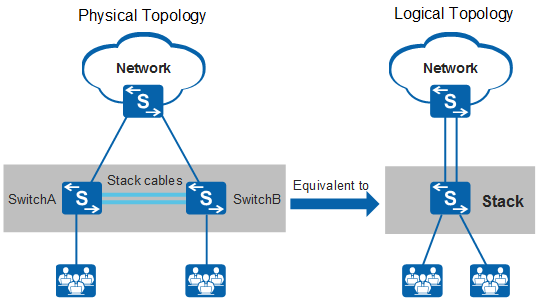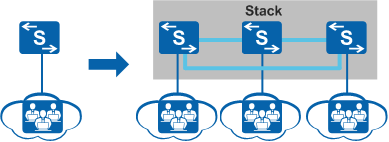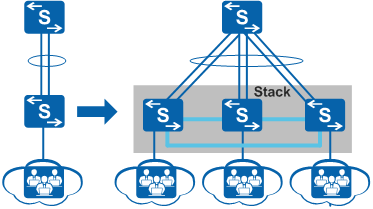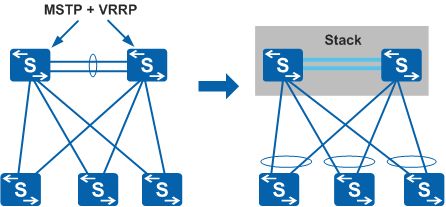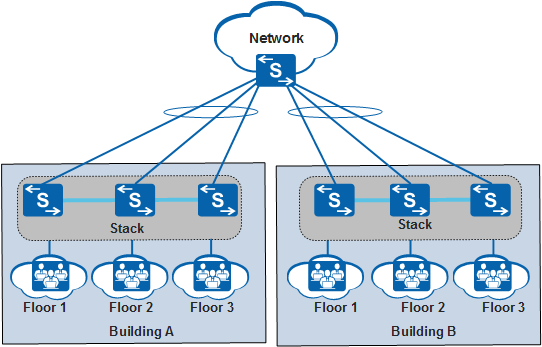Overview of Stacks
Definition
A stack can have multiple stacking-capable switches connected through stack cables. These switches, also known as stack members, work together as a unified system. The entire stack works as a single entity to the network.
In Figure 1, SwitchA and SwitchB are connected through stack cables to set up a stack.
Application Scenarios
Improving reliability
Multiple stack members work in redundancy mode. In Figure 1, SwitchA and SwitchB set up a stack and back up each other. When SwitchA fails, SwitchB assumes the role of SwitchA to ensure the normal running of the stack. In addition, the stack supports inter-device link aggregation and link redundancy.
Increasing the number of ports
When a switch lacks the required number of ports to support the increasing number of users, new switches can be added to the original switch to meet this requirement, as shown in Figure 2.Increasing bandwidth
When higher uplink bandwidth is required, add new stack members and bundle their physical links into a link aggregation group to increase the uplink bandwidth, as shown in Figure 3.Simplifying network topology
In Figure 4, multiple switches are virtualized into a single logical switch. This simplified network does not require MSTP, making network configuration much simpler. Additionally, inter-device link aggregation, speeds up network convergence and improves network reliability.Implementing long-distance stacking
In the network shown in Figure 5, users on each floor connect to the external network through corridor switches that are far from one another. Corridor switches in a building are connected using stack cables to form a stack. In this way, each building has only one virtual access switch, simplifying the network, as well as having multiple links to the core network, improving network robustness and reliability. The administrator only needs to configure stacks, as opposed to configuring corridor switches one by one. This reduces management and maintenance costs.
